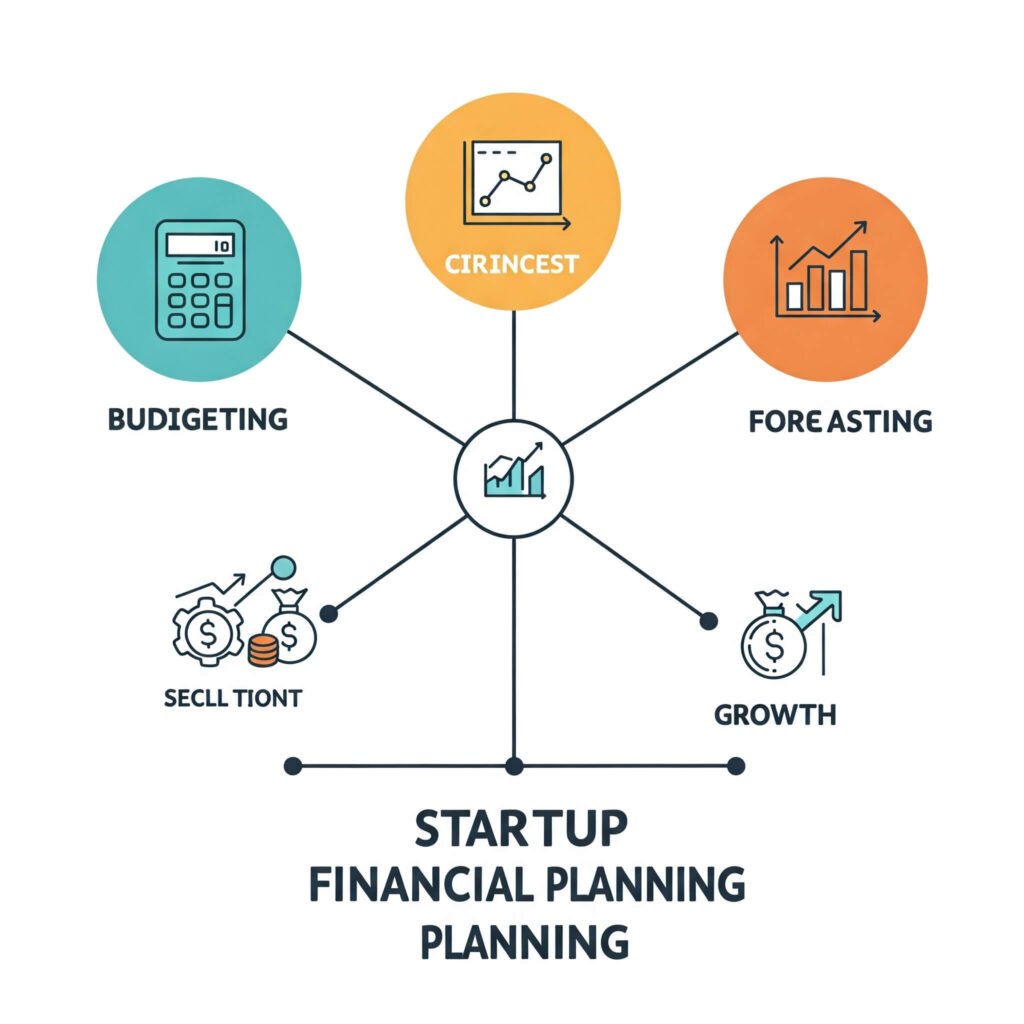Hey there, fellow innovators and dream-chasers! So, you’ve got that brilliant startup idea, the passion is burning bright, and you’re ready to take on the world. That’s fantastic! But before you dive headfirst into execution, let’s talk about something absolutely crucial for long-term success: startup financial planning. Think of it as the roadmap that guides your venture through the exciting, and sometimes unpredictable, journey of building a thriving business. Without a solid financial plan, even the most groundbreaking ideas can stumble. This guide will walk you through the essential steps of budgeting, forecasting, and beyond, empowering you to make informed decisions and steer your startup towards sustainable growth.
Why Startup Financial Planning is Your Superpower
Ignoring startup financial planning is like sailing without a compass – you might drift for a while, but eventually, you’ll likely lose your way. A well-defined financial plan provides numerous benefits, including:
- Clarity on your financial health: Understand your income, expenses, and overall financial position.
- Attracting investors: A robust financial plan demonstrates your seriousness and potential for return. (Check out resources like the National Venture Capital Association for investor insights.)
- Making informed decisions: Base strategic choices on data and projections, not just gut feeling.
- Managing cash flow: Ensure you have enough funds to cover operational costs and avoid unpleasant surprises.
- Tracking progress: Monitor your performance against your financial goals and make necessary adjustments.

Laying the Foundation: Startup Budgeting Essentials
At its core, startup financial planning begins with a well-structured budget. Think of your budget as a detailed breakdown of where your money is coming from and where it’s going. Here’s how to get started with startup budgeting:
Understanding Your Startup Costs
Before you can create a budget, you need a clear picture of your expenses. These typically fall into two categories:
- Fixed Costs: These are expenses that remain relatively constant regardless of your sales volume (e.g., rent, salaries, software subscriptions).
- Variable Costs: These expenses fluctuate based on your production or sales (e.g., raw materials, marketing spend, sales commissions).
List out all your potential costs, no matter how small they seem. Don’t forget often-overlooked expenses like legal fees, accounting software, and bank charges.
Creating Your First Startup Budget
Once you have a comprehensive list of costs, you can start building your budget. Here’s a simple approach:
- Estimate your revenue: Based on your market research and sales projections, forecast your potential income streams. Be realistic and perhaps even a little conservative in your initial estimates.
- Allocate your expenses: Assign each cost item to a specific category (e.g., marketing, operations, salaries).
- Calculate your profit (or loss): Subtract your total expenses from your total revenue.
- Review and adjust: Regularly review your budget against your actual performance. Identify any discrepancies and make necessary adjustments. Tools like Mint or QuickBooks can be helpful for tracking your spending.

Peering into the Future: Startup Financial Forecasting
While budgeting looks at the present and near future, startup financial forecasting involves projecting your financial performance over a longer period, typically 12 months or more. Accurate startup financial forecasting is crucial for strategic planning and attracting investment.
Key Elements of Startup Financial Forecasting
- Sales Forecast: Projecting your future sales revenue based on market trends, your sales pipeline, and marketing efforts.
- Expense Forecast: Estimating your future operating expenses, taking into account potential growth and scaling.
- Cash Flow Forecast: Predicting the movement of cash in and out of your business over time. This is vital for ensuring you have enough liquidity to meet your obligations.
- Profit and Loss (P&L) Forecast: Projecting your future income statement, showing your expected revenues, costs, and profits.
- Balance Sheet Forecast: Estimating your future assets, liabilities, and equity.
Tips for Effective Startup Financial Forecasting
- Use realistic assumptions: Base your forecasts on thorough market research and historical data where available.
- Consider different scenarios: Develop best-case, worst-case, and most-likely scenarios to understand potential risks and opportunities.
- Track your actual performance: Regularly compare your forecasts to your actual results and adjust your models accordingly.
- Seek expert advice: Don’t hesitate to consult with financial advisors or accountants who have experience with startup financial planning. (The Small Business Administration (SBA) offers resources and mentorship.)

Beyond the Basics: Advanced Startup Financial Planning
Startup financial planning doesn’t stop at budgeting and forecasting. As your business grows, you’ll need to consider more advanced strategies:
Break-Even Analysis
Understanding your break-even point – the level of sales at which your total revenue equals your total costs – is crucial. This helps you determine how much you need to sell to become profitable.
Sensitivity Analysis
This involves examining how changes in key variables (e.g., pricing, customer acquisition cost) can impact your financial projections. It helps you identify potential vulnerabilities and plan for contingencies.
Funding Strategies
As you scale, you may need external funding. Startup financial planning plays a vital role in determining your funding needs and the best sources, whether it’s venture capital, angel investors, or loans. (Explore platforms like Crunchbase for information on startup funding.)

